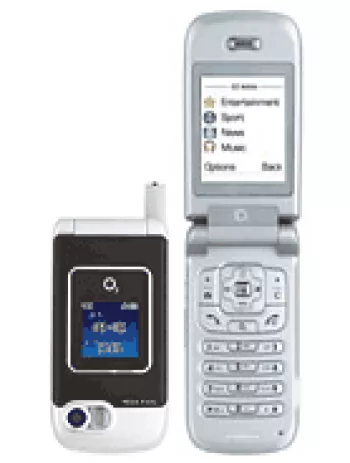
Overview of O2 Xphone
The O2 Xphone was a groundbreaking mobile device announced in 2003, marking a significant step in the evolution of smartphones. It was designed to cater to early adopters of mobile technology with its Microsoft Smartphone 2003 operating system, providing users with functionalities beyond mere telephony. Encased in a sleek body with dimensions of 120 x 50 x 24 mm and weighing 130 grams, the Xphone was portable and aesthetically appealing for its time.
Network and Connectivity
The O2 Xphone supported GSM technology with 2G bands including GSM 900 / 1800 / 1900. Despite the limitations of 2G connectivity by today's standards, it was sufficient for the basic communication needs prevalent in the early 2000s. The phone offered GPRS class 8 for data transfer, allowing for basic browsing capabilities, although it lacked EDGE support. Connectivity was further enhanced by Bluetooth and an infrared port for alternative data transfer methods.
Display and User Interface
Featuring a 2.2-inch TFT display with a resolution of 176 x 220 pixels, the O2 Xphone offered a modest viewing experience. The screen was capable of displaying 65K colors, which was fairly standard for that era but limited compared to modern devices. The screen-to-body ratio was approximately 25.4%, making it relatively compact. This display, alongside the Microsoft Smartphone 2003 OS, provided users with a navigable interface, albeit less intuitive compared to today's touch interfaces.
Performance and Hardware
Powering the O2 Xphone was the TI OMAP 710 chipset, featuring a 133 MHz ARM925 CPU. Although not particularly powerful by modern standards, this processor was adequate for handling basic tasks and applications available at the time. The device came with 64MB RAM and 32MB of internal storage, with the option to expand storage via MMC/SD cards. This allowed users to store additional data and applications, although the memory constraints limited the capability for heavy multitasking.
Camera Capabilities
Equipped with a VGA camera, the Xphone’s imaging feature was quite basic. With a 0.3MP resolution, the camera could capture still images but lacked video recording capabilities. While functional for simple photography, the quality was far from what modern smartphone users expect today. The absence of a front-facing camera also meant that selfies and video calling were not feasible, aligning with the technological landscape of that period.
Sound and Audio
The O2 Xphone came with a built-in loudspeaker and supported downloadable polyphonic and WAV ringtones, enhancing its audio capabilities. However, it did not feature a 3.5mm headphone jack, which meant users had to rely on proprietary solutions for wired audio output. Although this might have been limiting, it was somewhat typical for devices of that era as designs often prioritized compactness over universal connectivity options.
Battery Life and Usage
Powered by a removable Li-Ion 1000 mAh battery, the Xphone offered a standby time of up to 90 hours and a talk time of up to 3 hours. These figures were acceptable by early 2000s standards, offering users reasonable usage between charges. The absence of power-intensive features such as large color displays or constant internet connectivity meant that the battery life was adequate for the typical use-case scenarios of that time.
Additional Features and Software
Though limited in modern terms, the Xphone was equipped with useful features such as WAP 2.0/xHTML and HTML browsing through its PocketIE browser. This opened the door to mobile internet browsing, albeit at slow speeds. The software ecosystem, based on Microsoft Smartphone 2003, offered a range of basic applications suitable for personal information management, such as a calendar, email, and contacts management.
Conclusion
The O2 Xphone, despite its limitations by today’s standards, was a noteworthy entrant in the early smartphone market. Its amalgamation of mobile phone functionality with PDA capabilities and a compact design made it a worthy precursor to the smartphones we use today. Offering a glimpse into the beginning of mobile connectivity as we know it, the device remains a part of the history of mobile technology development.
O2 Xphone Main Features
- Supports GSM technology for 2G networks
- Compact dimensions: 120 x 50 x 24 mm
- Lightweight at 130 g
- 2.2-inch TFT display with 65K colors
- Runs on Microsoft Smartphone 2003 OS
- Powered by TI OMAP 710 chipset with 133 MHz ARM925 CPU
- Expandable memory via MMC/SD card slot
- VGA main camera
- Loudspeaker support with vibration and polyphonic ringtones
- Bluetooth and Infrared connectivity
- Removable Li-Ion 1000 mAh battery
- Equipped with WAP 2.0/xHTML, HTML (PocketIE) browser
O2 Xphone Major Drawbacks
- Lacks EDGE connectivity, limiting data speeds compared to competitors.
- Discontinued status means no official support or updates are available.
- Small screen size with a low screen-to-body ratio, resulting in limited display area.
- Low resolution display with only 128 ppi, not suitable for modern multimedia use.
- Outdated operating system (Microsoft Smartphone 2003), lacking modern features.
- Limited internal memory (64MB RAM, 32MB ROM) restricts multitasking and storage options.
- Basic VGA main camera with no video recording capability.
- No selfie camera available for video calls or selfies.
- No 3.5mm headphone jack, requiring adapters for standard headphones.
- No WLAN connectivity, limiting internet access options.
- Absence of GPS positioning feature.
- Proprietary USB port limits compatibility with standard USB accessories.
- Lack of radio feature for FM listening.
- Limited battery life, with only up to 90 hours standby and 3 hours talk time.

View Also
More Phones
All Rights Reserved +13665 Phones © Mobilawy 2025

























